North Stoke, Oxfordshire (†Oxford) C13/14
Passion Cycle
“Verily I say unto you, One of you that eateth with me shall betray me…”
(Mark 14:18)
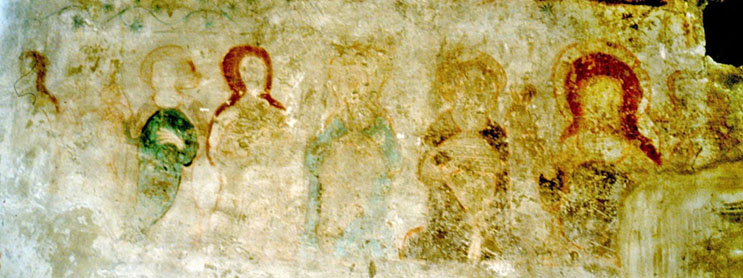
Faint and damaged as it is, I think this Last Supper captures the moment in Mark's gospel when this is said. Christ himself is by far the largest figure and he sits at the extreme right here, his hair now showing as a bright red (probably a much more subdued colour originally). It is very hard to see, but his right hand is raised, and at huge magnification something of the gestures of the disciples further left can be made out – the figure in green near the left hand edge of the table also has his hand raised, for example.
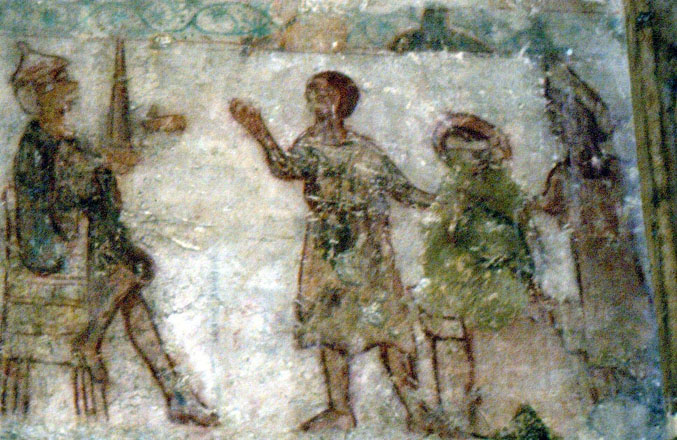
Of the table itself there is now no sign beyond an area of blank plaster, and if Judas was sitting on the opposite side of the table, as at Belchamp Walter and elsewhere, there is now no sign of him either.
Next in chronological order comes a scene of Christ before Pilate (or possibly Herod, but I think Pilate is more likely). He (Pilate) sits at the far left of the scene, legs crossed in the posture of a tyrant. His sword is upraised and his left hand held open and out, quite possibly to signify his resignation to the will of the people as narrated in Mark 15.
Further right, a man in short tunic presents the seated Christ to Pilate, and another man, standing this time, at the far right seems from his clothing to be one of the High Priests who figure in the complex story of rival and uncertain authorities.
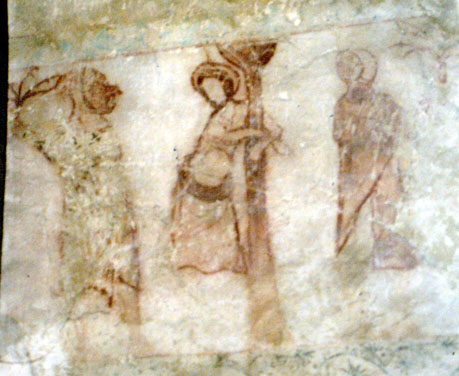
At North Stoke, complexities multiply from now on as this ambitious painter tries to express these central and overlapping incidents in the Gospel narratives in coherent visual form. Pilate ordered Christ to be scourged before handing him over to the clamouring Jerusalem crowd and that is what is happening in the next scene (left).
Gospel acccounts of the sequence of events on the day of the Crucifxion are wayward and well-nigh impossible to present in chronological order even in a written narrative. For all that, the cat-o'nine-tails scourge wielded by the torturer on the left is clear enough, and that of his companion at the right can also be made out, faintly, as he holds it up and out against the scrollwork upper border. This is the scene generally known as the Scourging at the pillar. It is worth noting the grotesquely ugly faces and tightly-fitting hoods of the two torturers here, because analagous details become important later.
The next photograph is problematic. but after much scrutiny and consideration I think that the most likely explanation of this mysterious scene is that it is intended as a kind of interpolation, showing Judas in the act of selling Christ.
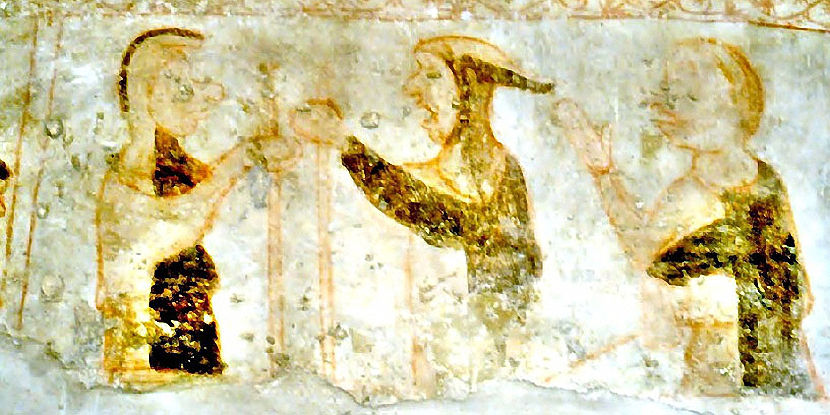
Judas is at the left below, his cupped hand extended, but the most unusual point about this already unusual depiction is the black or very dark outline or edging to his otherwise bare head, and this, I think is the painter’s gesture in the direction of the black halo which sometimes distinguishes Judas from the other disciples in other early painting, especially manuscript painting (The man in the pointed hood in the centre holds up both hands to drop money into that of the waiting Judas, and a second man at the right is also, I think, holding out a coin, although the detail is admittedly unclear.) Perhaps the most important point of all is the fact that both men are painted as exaggeratedly ugly, with facial features rendered grotesque, and so is Judas. He has become as evil as those who pay him. Unfortunately Judas does not appear at North Stoke in any earlier scene, so there is nothing to compare this one with, but instinct tells me I am right. Judas is sometimes found with a black halo in English stained glass, but all the examples I have seen are from the nineteenth century.¹
The next scene in order, and shown below, is the Crucifixion. The detail is unclear, and it is dificult to be certain, but it looks as though Christ is being tied to the Cross with ropes in this next photograph. Once again, both torturers have the exaggeratedly ugly features that were evidently a speciality of the North Stoke painter.
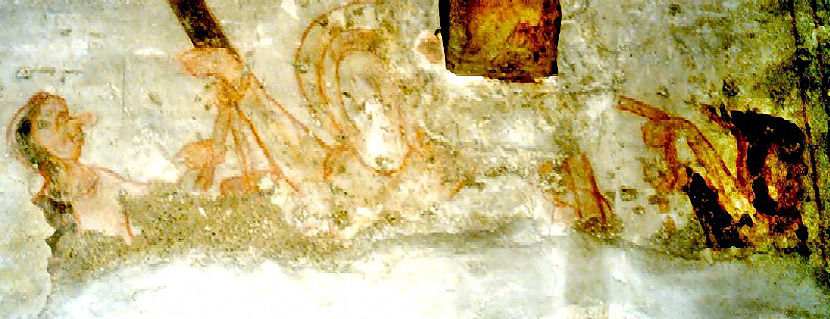
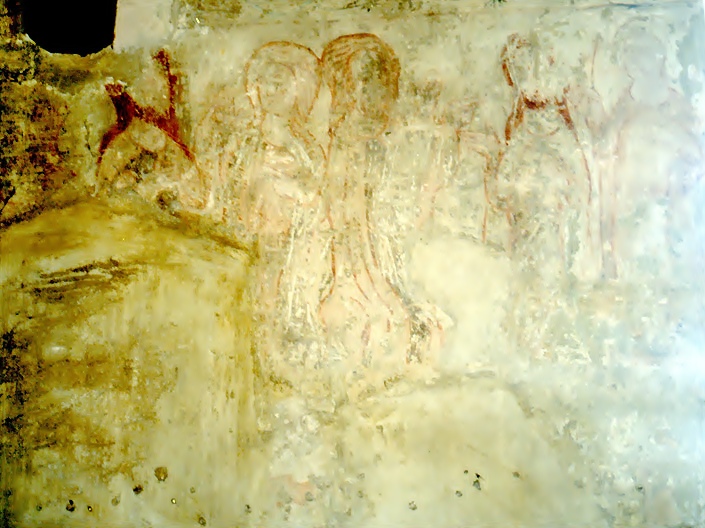
There is probably a scene of the Resurrection at North Stoke, but it is partial, damaged, and very unclear, although I will try to include it at a future update if I can. The next clear scene though, is the Three Maries at the sepulchre, and it is shown here below. This too bears the marks of enthusiastic scraping, but the main features show well enough. The risen Christ is at the far left, with the slightly alarming bright red hair, halo and beard characteristic of this Passion Cycle.
He holds up his hand, probably to forestall the first Marie (probably Mary Magdalene) as she tries to touch him. Another female figure stands further right, and then, after a gap, a third woman in a red mantle, whose sharply-angled rightward pointing gesture is still fairly clear. At the far right of the scene is a very faint male figure, almost certainly Peter.
All in all, a very interesting, if incomplete, Cycle. The painter’s figures in profile are particularly impressive. It joins the Stoning of Stephen and the Martyrdom of Thomas Becket, which have been here for some time.
¹ Judas, showing black halo decorated with scorpions. Follow the link to see a rare, fascinating, and zoomable medieval example from the Morgan manuscript collection in New York.